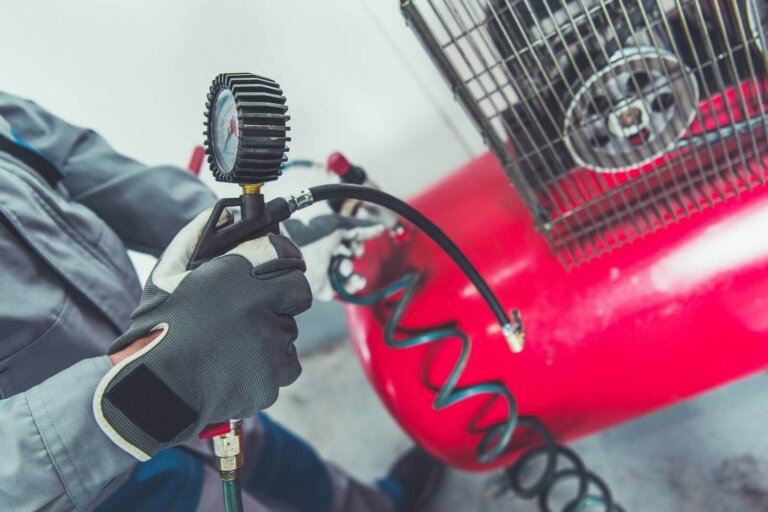Electric motors are an important part of the equipment of a company. They are used for industrial, commercial and residential purposes, and allow the operation of trains, automobiles, compressors, pumping systems, among others. Regardless of the industry, this type of propellant plays a key role in productivity, as well as its maintenance.
In our aim to keep it up and running without interruption, maintenance must be performed consistently and in a planned manner to avoid future problems. Although it can be interpreted that the operation of an electric motor can be as simple as an internal combustion one, or even simpler, poor maintenance is a condemnation for these types of engines, since they can hardly return to their original state, unless they are replaced almost all of its internal components, which easily leads us to conclude that the cost of a breakdown is not small.
Therefore, the key is to seek that electric motors deliver their maximum potential for as long as possible. And for that, strategic maintenance planning is needed, as we will review here.
How are electric engines?
The basic principle of an electric motor consists of being a rotating machine composed of a stator and a rotor that, through the action of magnetic fields generated in their coils, convert electrical energy into mechanical energy.
Considering the importance of preserving the environment, a great advantage of electric motors is that they do not pollute. And in operational terms, it stands out for its constant speed, high performance, autonomous ventilation that does not require cooling or external ventilation, and greater efficiency than its combustion equivalents.
Keys for protecting an electric engine
The conservation of electric motors is a fundamental aspect for companies, given their condition of continuous use. For that reason, all electrical and mechanical components exposed to wear and contamination with external elements must be covered.
Electrical components such as windings or brushes need periodic maintenance and measurements where a connection review is carried out, replacing parts with wear.
There are a number of instruments that are essential for maintenance work on electric motors, including megohmmeter, micro-ohmmeter, multimeter and oscilloscope. Thanks to them, it is possible to obtain values of insulation, continuity, frequency, current, voltage, power and waveforms.
In turn, bearings, shafts, housings and other mechanical components of electric motors must be subjected to a maintenance guideline that considers cleaning, anchoring of the parts and measurements that allow evaluating the speed, rotor balance, and applied torque. by load and temperature.
What kind of maintenance to do?
There are two ways when choosing the maintenance of any electric motor. Whether preventive or corrective, both seek to guarantee proper operation, avoiding or repairing breakdowns and extending their shelf life to the maximum. However, there are differences between one and the other.
Preventive maintenance, as its name implies, is carried out periodically and its objective is to prevent breakdowns that interrupt the operation of the engine. It must be carried out in a planned manner, verifying the operation and carrying out procedures for adjustments, lubrication, revision and replacement of parts, following the manufacturer’s recommendations based on the workload of the engine.
The corrective maintenance option comes into action when there is a failure in the engine that interrupts its operation or causes damage that prevents its full operation. Given its unpredictable nature, it is important to minimize its effect. To achieve this, it is essential to have the necessary spare parts for repair and have qualified personnel to carry out the work in the shortest possible time.
When it comes to electric motors, it is advisable to prioritize predictive maintenance over corrective maintenance. First, because by carrying out periodic reviews the margin of possible failures is reduced and it is ensured that they always work to the best of their capabilities. And also because when an electric motor starts to fail, it is too late.
Guidelines for effective maintenance of an electric engine
There is a series of tips that must be followed to effectively maintain an electric motor:
1. Visual revision of each component
A simple visual tour of an electric motor is enough to identify important details that require maintenance.
Eye observation can reveal signs of overheating and other fault-inducing conditions. However, the other senses also play a key role, detecting odors, excessive noise, vibrations, among other signs.
2. Detection of vibrations
The moving parts that make up an electric motor can generate noises and harmful vibrations that affect its optimal operation.
In general, vibrations occur in the mechanical parts of these engines and are not easy to detect. One way to identify them is by running the motor disconnected from the parts it has to move and doing some tests with instruments that help identify what is causing the vibration.
3. Bearing operation
The bearings are responsible for the movement of some parts, so if they present noises or vibrations they could be indicating potential problems.
Poor lubrication, dust build-up and wear are some of the most common causes, as well as overheating of a bearing housing.
In some cases, a simple cleaning and greasing or lubrication can solve the problem, but many times a change of bearings will be necessary for maintenance, so it is recommended to know the requirements of each type of bearing to carry out the corresponding work.
4. Periodical cleaning and lubrication
Temperature is key to the operation of an engine. And the greater the heat that is generated, the greater the risk of problems. Dust is also an enemy of electric motors, since it works as an insulator and causes an increase in temperature, and this causes greater wear on the bearings. Along with rust, it also affects relays and contacts, so they must be cleaned very well.
Corrosion is also a risk factor to avoid, so each component needs to be lubricated to protect it. However, excess lubrication affects the windings, so the lubricant must be applied in its proper measure.
5. Try the engine windings
Overheating of a winding is a risk of serious damage. To test a winding it is necessary to disassemble the engine, so faults in the windings may be detected.
The recommendation here is to rewind the motor. Testing the insulation reveals information about the resistance level.
Maintenance software: an essential ally
As in other equipment, the maintenance work of an electric engine is vital for the productivity of a company and requires specialized attention for efficient management.
Given the large workloads and the volume of information that must be handled in the maintenance management of an electric motor, having software to support human work is key.
By having this type of digital support, there are a number of functions that can be performed more quickly and accurately:
- Backup the current status of each engine
- Generate a maintenance work log
- Collect crash reports
- Plan and schedule maintenance
- Generate automatic work orders
- Control and measure the work of each professional in charge of these tasks
- Manage spare parts inventory
The advantage of having software for the maintenance of an electric engine allows to organize, plan, measure and correct the work in a faster and more efficient way, optimizing the human and technical resources of a company.
Due to the multiplicity of options, it is important to evaluate the type of solution that is needed, considering that there is the possibility of customizing software to meet the specific requirements of a company.
Due to the ease of use and the speed of information processing, the support of a digital application is of great help when it comes to avoiding unexpected failures that can jeopardize the entire operation of a company, simply because of a failure in a bearing or other part of an electric engine.
Maintaining this type of equipment, as well as others that affect the productivity of an organization, turns out to be a fundamental strategic decision. Therefore, having a plan to carry out this work should be a mainstay among executives’ decisions to avoid unpleasant surprises.







